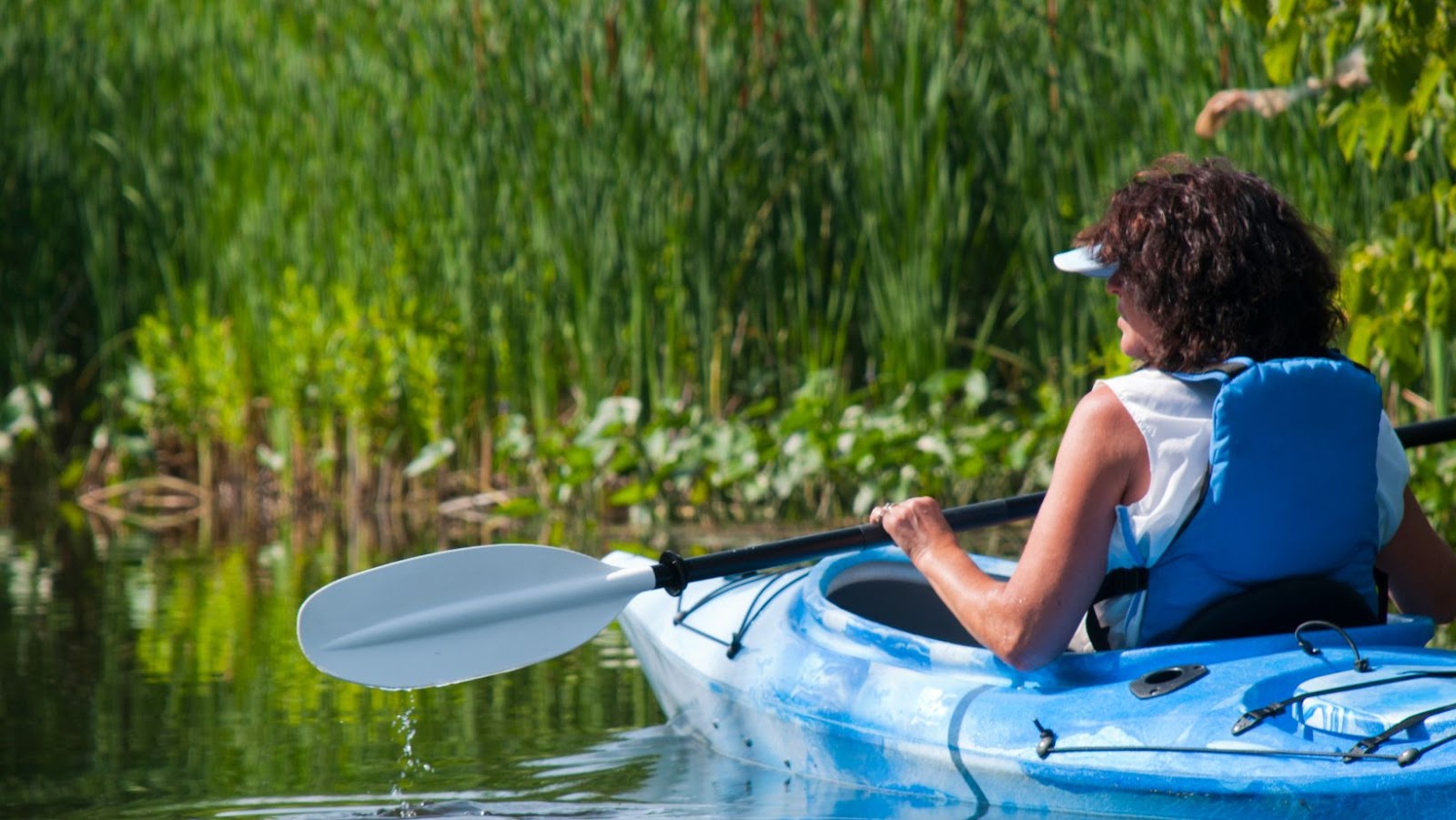Do you wish to try kayaking for the first time but are confused about the rules and regulations? This article can equip you with the necessary knowledge to have a safe and memorable kayaking trip.
You will find a comprehensive guide of do’s and don’ts that can help you ensure your expedition is not only enjoyable but also risk free.
Introduction to Kayaking
Kayaking is an exciting, adventurous activity that can provide hours of fun and enjoyment. Before you head out to explore the waters, however, it is important to remember that kayaking requires a certain level of knowledge and experience in order to stay safe and have a successful adventure. To ensure your next kayaking trip is unforgettable for the right reasons, this guide will explain some dos and don’ts of kayaking.
Do:
- Wear proper safety equipment at all times, including a personal flotation device (PFD) and a drysuit or wetsuit.
- Read the weather forecast prior to heading out on your outing.
- Fill out a float plan before throwing off the dock – make sure you tell someone where you are going and when you expect to return.
- Have a cellphone or communication device on board in case of emergency.
- Bring food and water in case the trip takes longer than expected.
- Observe wildlife from far away — never touch or disturb any animals or their surroundings while out on the water.
Don’t:
- Don’t paddle alone — always bring another person with you on your trip whenever possible!
- Don’t be unprepared — pack appropriate supplies such as food, water, maps and GPS devices if available.
- Don’t overestimate your skillset – make sure you are comfortable paddling with waves before venturing too close to shorelines.
- Don’t forget about currents – be aware of changing tides so that you don’t get too far from shore accidentally or lose control of your boat in unfavorable waters.
Types of Kayaks
When selecting a kayak, factors such as size, shape, stability and purpose are important considerations. Kayaks can range in lengths from under five feet to over 20 feet. Shorter kayaks are easier to store and transport but may sacrifice some speed and tracking ability. Longer boats tend to track better and be faster, but will be more difficult to store or transport on a vehicle roof rack.
Some of the most popular types of kayaks include sit-in, sit-on-top, inflatable, folding and touring models. Sit-in kayaks provide more protection from the elements than their sit-on-top counterparts while offering less initial stability on the water. Sit-on-top models can generally handle rougher water and offer more initial stability while sacrificing a bit of protection from wind chill and splashing waves.

Inflatable models use air chambers as buoyancy aids instead of traditional hard shells which make them lighter for transportation. Folding kayaks have frames that collapse for easy storage though many regard them as technical boats since they tend to require maintenance due to their non-traditional materials used in construction such as Kevlar or wood ribs for support. Touring models have pointed bows for cutting through waves smoothly with greater efficiency in flatwater conditions including rivers and lakes – but these drive efficiency at the expense of maneuverability in tight spaces.
Kayak Safety
Kayaking is an exciting and enjoyable way to explore the outdoors, but it’s important to be aware of potential hazards. Being prepared and aware of the do’s and don’ts of kayaking can help ensure a safe and pleasurable experience.
Do:
– Wear a US Coast Guard-approved personal flotation device (PFD) at all times while kayaking.
– Practice proper paddling techniques in order to stay afloat and conserve energy.
– Bring a waterproof emergency kit with food, water, flares, extra clothing, and other supplies in case you experience difficulty on the water.
– Be familiar with weather conditions for the area you plan to kayak in before heading out on your excursion.
– Be familiar with the local rules of waterways you are paddling on — most areas have established guidelines for recreational boaters that must be observed.
Don’t:
– Don’t paddle alone — bring at least one other person to aid in a rescue if needed.
– Don’t forget about tides — make sure you plan for high tide/low tide changes when navigating open waters or coastal estuaries.
– Don’t ignore waves — use offshore swells as an opportunity to observe wave behavior prior to paddling out into them or beyond them.
– Don’t ignore hazardous wildlife such as jellyfish or sharks—be aware of your surroundings at all times when paddling near shorelines or open waters with dangerous sea life known to inhabit certain areas.
By following these do’s and don’ts, both rookie and experienced kayakers can enjoy an enjoyable outing on their favorite waterways safely!
Essential Kayaking Gear
Essential kayaking gear is key to an enjoyable and safe experience out on the water. When beginning your kayaking journey, or for those who are just looking to upgrade their current equipment, it’s important to be familiar with the do’s and don’ts of your kayak setup.
Do:
- Obtain a Coast Guard approved life jacket – it will provide comfort and security while you are out in the elements.
- Invest in a paddle – a good paddle will increase power and accuracy when you are on the water.
- Choose a reliable kayak – ensure your craft is designed for whitewater, touring or recreational use as appropriate.
- Utilize extras like spray skirts, splash decks, rod holders, compasses and more depending on your individual needs.
Don’t:
- Forget to wear proper clothing – wet suits may be necessary depending on weather conditions.
- Overpack – keep in mind what can fit inside the boat!
- Painting fiberglass boats – painting fiberglass boats decrease their structural integrity by adding unnecessary weight.
By taking these do’s and don’ts into consideration when investing in essential kayaking gear, you will ensure a happy experience out on the water spent responsibly with safety as the first priority!
What are the Do’s and Don’ts of Kayaking
Kayaking Do’s
When kayaking, there are a few do’s that will help ensure the safety and enjoyment of the participants. One of the most important do’s is to always follow boating regulations and laws. You should have knowledge of the rules and regulations for the area you are visiting, as well as what kind of gear is necessary for your trip.
Always wear a personal flotation device (PFD) when kayaking. The PFD should fit snugly and be worn in accordance with safety standards. If wearing a spray skirt, make sure it fits correctly so that water cannot get through easily. Make sure you provide extra protection by wearing appropriate clothing such as neoprene garments to provide insulation in cold water conditions or specialized outerwear which is designed to keep you dry and protect you from sunburns.

In addition to wearing the right clothing, it’s important that all participants wear a helmet while kayaking. Helmets will provide protection from potential head injuries caused by impacts with rocks or other boats. In order to control your boat properly and reduce risk of capsizing, make sure your boat is outfitted with adequate buoyancy aids such as float bags or foam blocks tied securely at each end of the boat. Carry necessary supplies such as drinking water, snacks, first aid kit and other items in waterproof containers tied down safely before hitting open waters.
It’s also important that you become familiar with signals so that communication between ships will be easier during emergencies or when traveling in groups on open waters. Be aware of your surroundings at all times especially when traveling near rocks or other obstacles where a sharp turn may be impossible due to potential pitfalls which could capsize your kayak if not avoided immediately!
Kayaking Don’ts
Before you go kayaking, it is important to understand the do’s and don’ts of the activity. While kayaking may seem simple and fun, it can be dangerous and even life threatening if not performed in a safe manner. Here are some of the most important don’ts of kayaking, including protective measures and safe procedures:
• Don’t venture out into deep water unless you’re properly equipped with all safety gear, including buoyancy aid, signaling device, and extra clothing for cold weather
• Don’t paddle alone; always paddle with an experienced buddy or group
• Don’t exceed your skillset or attempt overly difficult conditions or river sections for your level; you should always match the paddling environment to your personal paddler capability
• Don’t use medication that impairs your judgment before embarking on a kayaking excursion
• Don’t forget essential safety equipment such as a first-aid kit and basic tools to fix any malfunctioning equipment while on this journey
• Don’t ignore weather warnings when heading out in particularly unsafe conditions. Monitor local forecasts before heading out on the water.
Kayaking Tips and Tricks
Being out on the water During a kayak trip can be both thrilling and peaceful. To ensure you have a safe, enjoyable experience, take some time to familiarize yourself with the Do’s and Don’ts of kayaking.
Do: -Know your kayak. Before heading out on the water, get to know your kayak and its features. Get comfortable in different positions and understand how to operate both at sea level as well as closer to shore. -Wear a life vest. Always use approved U.S Coast Guard life vest that fit properly in order to ensure your own safety when kayaking. -Use the buddy system when possible. Kayaking with a friend can help increase safety and enjoyment of your outing by lending an extra set of eyes and hands in case of an emergency situation or equipment challenge arises, as well as provide positive encouragement throughout the trip! -Educate yourself about weather conditions in the area you will be paddlingen in prior to embarking on your journey so that you are prepared for any changes that might occur while on the water—strong currents, high winds, storms etc.—and alter your plans accordingly if necessary.
Don’t: -Never overload your craft by bringing more cargo than it is designed for carrying—this could endanger both yourself and any passengers you have aboard! -Alcohol consumption should also avoided when out paddling, since being intoxicated can drastically impair judgment capabilities which can lead to dangerous situations—both for yourself and others around you. -Avoid rough terrain routes unless you are sure of your abilities; choose calmer waters where possible (in lakes or close inshore). Also be aware that aggressive waves could cause difficulties maneuvering while trying to return back land safely once they start breaking closer shorelines—so it’s best to Exercise caution when waves start picking up during trips near shore!
By practicing these do’s and don’ts during trips or when renting out equipment, Kayakers ensure their own safety while having the most enjoyable experience possible!
In conclusion, there are many aspects to keep in mind when it comes to safely and responsibly kayaking. Always check the weather before embarking on an adventure, and make sure you are prepared with all the necessary safety equipment. Wear protective clothing, such as gloves and a life jacket, that provide adequate support and protection against environmental elements.
Lastly, remember that responsible navigation should be a priority while kayaking; always know where you are going and which routes or harbors may be too dangerous to explore. By following these tips and taking some time to familiarize yourself with the area you will be exploring, your time on the water is sure to be safe and enjoyable.




No Comment! Be the first one.